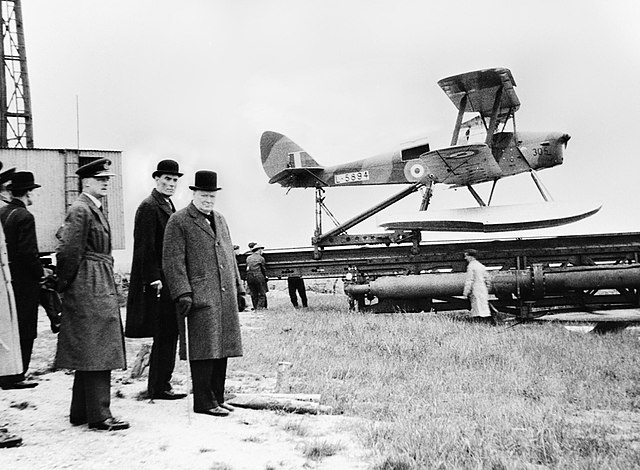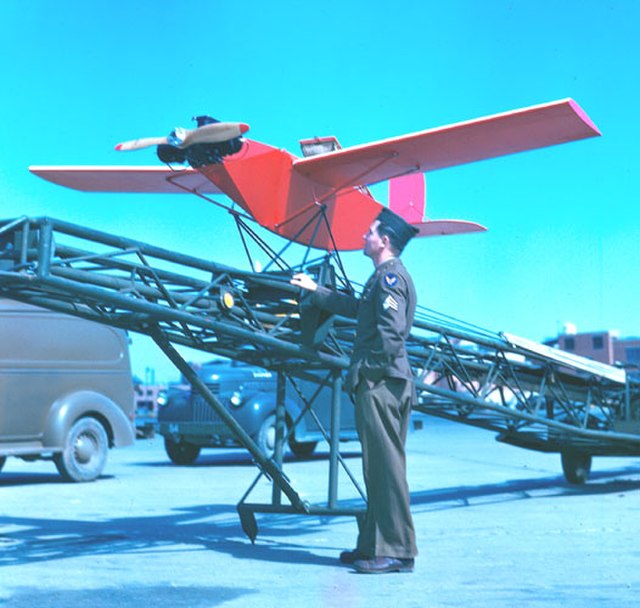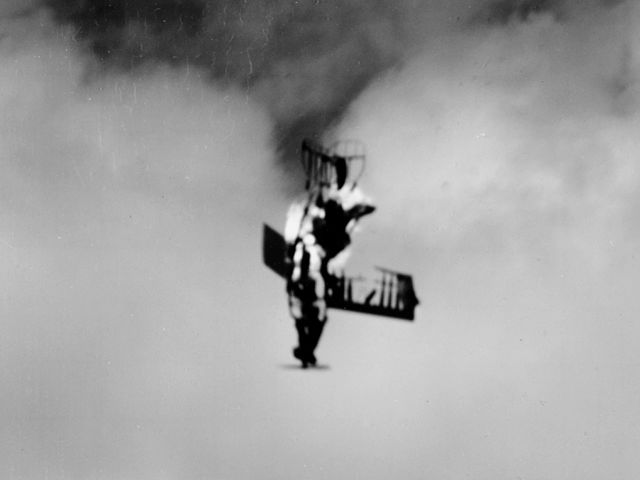History of unmanned aerial vehicles
Unmanned Aerial Vehicles (UAVs) include both autonomous drones and remotely piloted vehicles (RPVs). A UAV is capable of controlled, sustained level flight and is powered by a jet, reciprocating, or electric engine. In the twenty-first century, technology reached a point of sophistication that the UAV is now being given a greatly expanded role in many areas of aviation.
A BQM-74 Chukar III, turbojet-powered aerial target drone
Winston Churchill, David Margesson and others wait to watch the launch of a de Havilland Queen Bee target drone, 6 June 1941
A Radioplane OQ-3 and its launcher, Wright Field, October 1945
A US Navy OQ-2 shot down by the USS Makin Island during a gunnery exercise off Wakanoura, Japan (October 1945)
Elmer Ambrose Sperry Sr. was an American inventor and entrepreneur, most famous for construction, two years after Hermann Anschütz-Kaempfe, of the gyrocompass and as founder of the Sperry Gyroscope Company. He was known as the "father of modern navigation technology".
Elmer Ambrose Sperry
Sperry's stabilizing gyroscope installed in the USS Henderson
Aircraft gyrocompass built by Sperry
Elmer Ambrose Sperry demonstrating the operation of a searchlight








